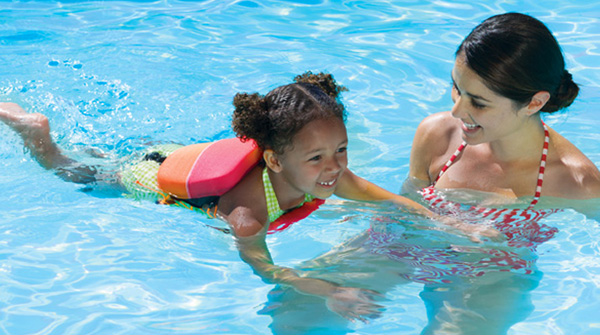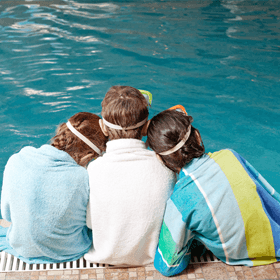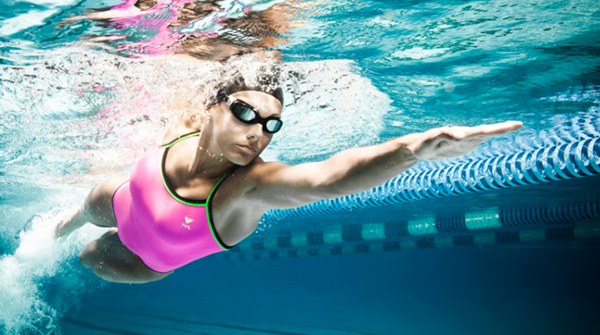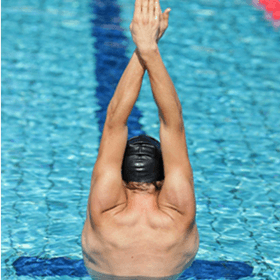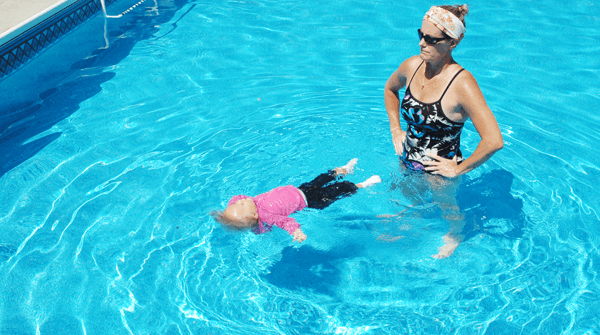Why I made my kids take swim lessons: Do you really need it? This will help you decide!
With regards to extracurricular exercises, I’m a genuinely laid-back mother. I need my children to examine their interests and attempt new things, yet I likewise think at their age its general as imperative to have a great time. I have never requested they take an interest in anything—except swim classes.
From the point my kids were babies; I’ve had them in some swim classes. I began with one of those classes where you hold your children (who are wearing a swim diaper that you pray will perfect for the job), spin them around in the water, sing a few melodies and throw in the towel.
When they were around two, I began concentrating on the real swimming part. We started with gathering classes at the Y, which they adored. In these classes, they played and flapped around the shallow end under a major plastic tree that threw out water.
My children couldn’t hold up to go to the pool, however despite everything they didn’t know how to swim, which is a disturbing stage to be in. Heading off to the pool with children who are incredibly water confident, but unfortunately have no skill to float inside it can be challenging and breed fear in mothers.
At the point when my kids were around four years of age, we proceeded onward from the Y and began taking group swim lessons at the neighborhood. These were, shockingly, not as accommodating as I had trusted.
When you have twelve four-year-olds and one surprised the swim coach, you will even be motivated to get eleven children lined up for swimming training, smiles!. Once more, my children had some fun, yet they didn’t figure out how to swim. At that point came the close suffocating occurrence where my children’s class was taken out to five-foot- deep water and advised to clutch the edge of the pool while the instructor worked with them each one in turn. A hefty portion of alternate children in the class could swim, however mine couldn’t yet.
While the
swim coach was most of the way over the pool with one child, my children lost his hold. He went under, and a whole lot of fright gripped my heart and soul. I sat tight for a brief moment to check whether he would seize the edge once more, yet it rapidly turned out to be clear from the way he was flailing wildly that he was unable to come up to the edge.
Sigh! I didn’t get up from the benches I was seated over to the side of the pool, yet I was there in a moment. The head lifeguard additionally kept running over and called the swim-coach’s name, which is the point at which he saw my children, came over and snatched him. We raised him out of the pool.
He was crazy. I sat there with him in my arms on the pool deck and shook him forward and backward. After around 10 minutes, the lifeguard prescribed attempting to get him back in. I said there was no chance I was going to do that unless they moved back to the shallow end. They did, and he dauntlessly got back in the water. I gave a shout out to him for a couple of minutes, and after that, I went to my seat where I started crying silently, holding my children’s towel over my face so he wouldn’t see me cry.
After that experience, swimming went from being something I needed them to figure out, and now it turns to being something they needed to figure out how to do.
Thereafter, I searched and found a swim school that offered private swim coaching. I did that purposely to transform my children into professional swimmers. The initial few times mine went they disliked like it. These educators did not give them a chance to take hold of the sides or remain in the shallow end—when they required a break, the instructors would flip them over onto their backs so they could figure out how to go floating on water.
My children would be requested to swim from one point of the pool to another in the shallow end. They would sink and come up panting, yet they were going to complete the task. What’s more, kid, did they despise that. It was alarming for them and not in any way shape or turn into a fun, but rather think about who couldn’t have cared less? This mother! Since you know what’s scarier and even less fun, this is suffocating. In less than a month, my children could swim over the whole pool. Also, now, after two years, they cherish setting off to their lessons and can hardly wait to go swimming.
These lessons have not been poorly coordinated and the swim school is on the opposite side of town, however the sincere peaceful feelings I got from realizing that my children can swim and float inside water worth it.
Swim class is the main action I have constrained my children into without minding regardless of whether they lived it up. In any case, as I realized when I saw my children battling for air in five feet of water, swimming is one of those aptitudes that shouldn’t be voluntary for any child, whether you take them to private lessons or out to the nearby swimming opening. Be strong, know they may cry and gripe, simply let yourself understand their tears will be justified at the end of the day, despite all the trouble. It worked for me.

